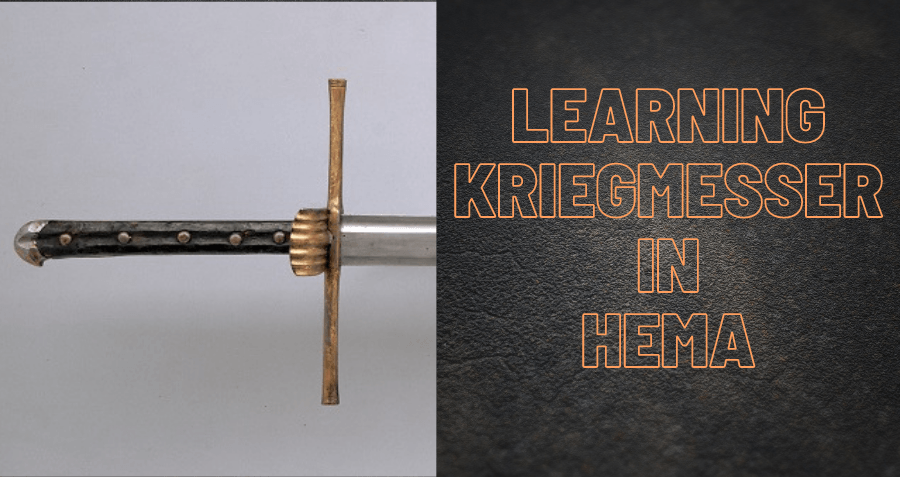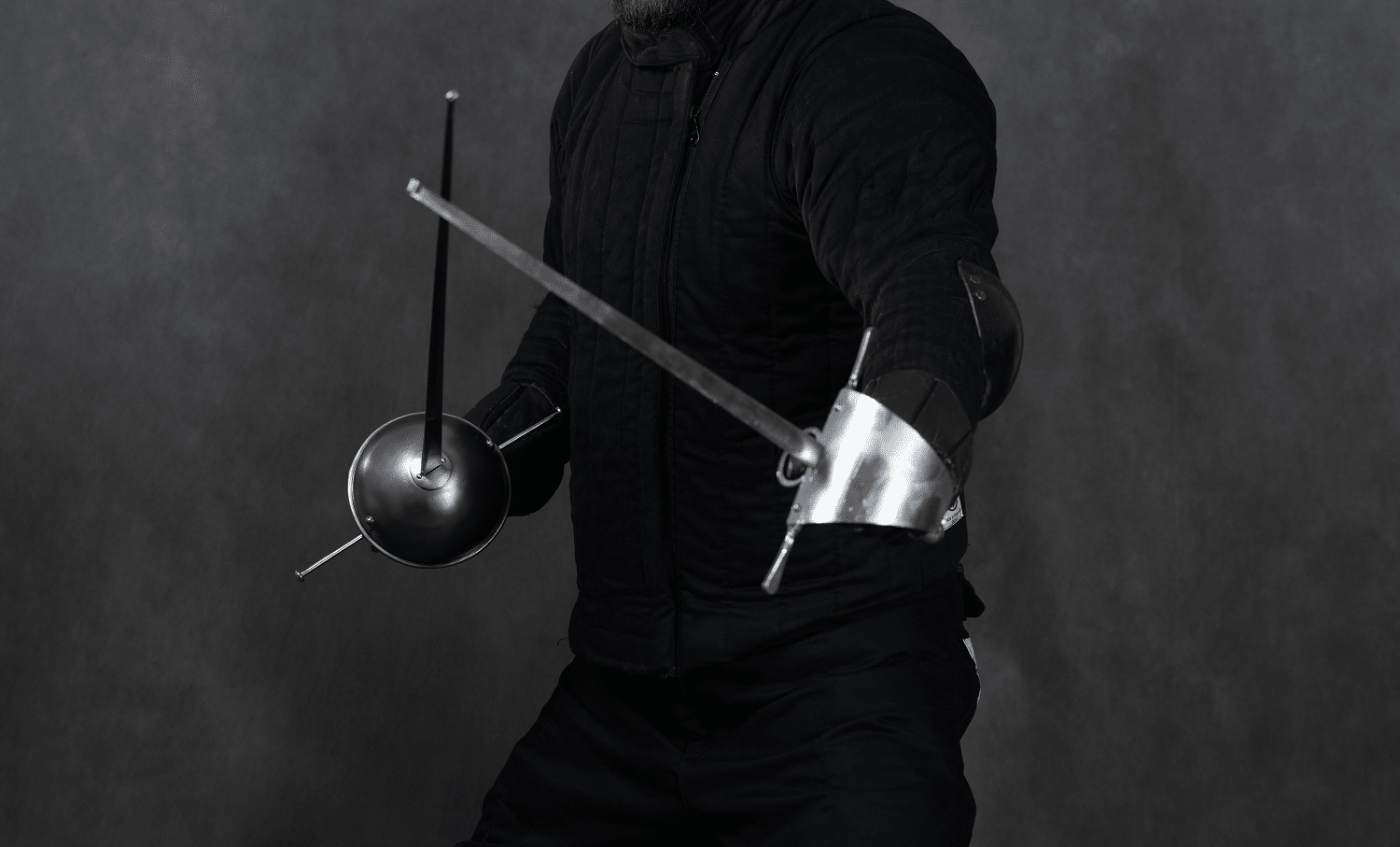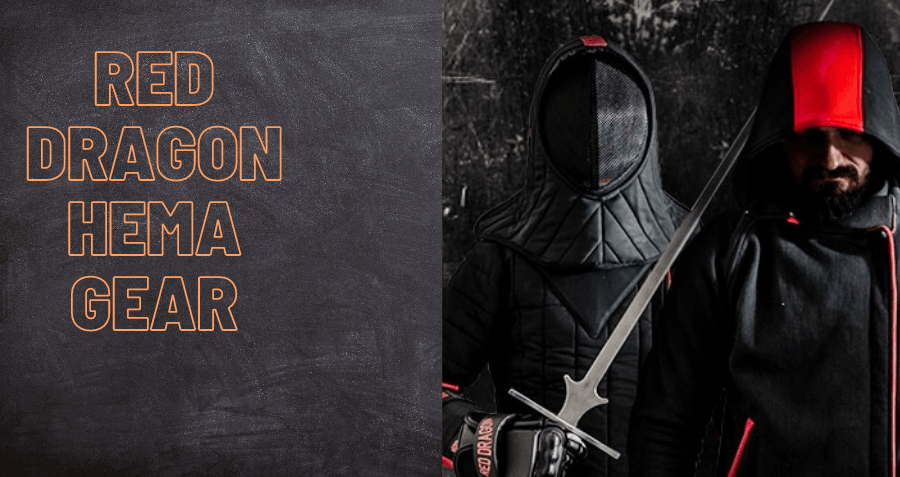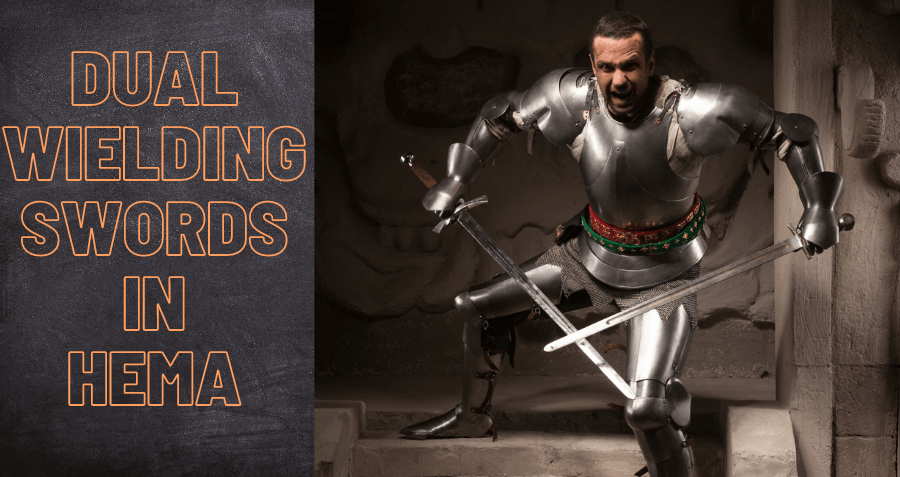The history of European martial arts is rich. This article is an attempt to stitch together the various pieces of information that have floated around the internet pertaining to the emergence and growth of the revival of Historical European martial arts and swordsmanship in the modern age. The pivotal events are collected here, as are the achievements made by individuals toward the reconstruction of these arts. This article about the history of HEMA in its current state is unlikely to provide a complete overview of all events. Some of this information is based on hearsay from other websites, some of which no longer exist. Their content was saved in our notes and are now shared here for others to discover and debate about, and hopefully in the process more concrete information can be obtained and this timeline revised. This article is frequently updated as more information is gathered.
19th Century
1890s: Alfred Hutton, a student of the fencer Henry Charles Angelo, can be considered the first person to attempt to revive the historical European martial arts of the Late Middle Ages and Renaissance long after the living lineages had died out, although his work would ultimately influence the development of stage fencing into the theatrical scene more so than trigger a long lasting revival of the martial arts. Hutton was the author of several popular manuals of combat, such as Cold Steel in 1889 that described a method of sabre fencing he had learned based off English broadsword, and a book on bayonets, published as Fixed Bayonets, in 1890. Hutton then wrote Old Sword-Play in 1892 that discussed usage of older weapons such as the great sword (called the ‘long sword’ by him), rapier and dagger, broadsword and buckler. Later in 1901 he would write The Sword and the Centuries which discussed the history of swordsmanship as best he could research it for the time period. Hutton frequently collaborated with prominent author Egerton Castle, who wrote Schools and Masters of Fence from the Middle Ages to the End of the Eighteenth Century: With a Complete Bibliography in 1892. Hutton and Castle toured extensively to deliver lectures and demonstrations of these systems during the 1890s, both in order to benefit various military charities and to encourage patronage of the contemporary methods of competitive fencing. Castle would go on to become captain of the British épée and sabre teams at the 1908 Summer Olympics. Hutton died in London, on December 18th 1910, his collection of fencing and dueling literature donated to the Victoria and Albert Museum, although at present day his collection is now scattered around several other museums. It is theorized that Hutton’s attempts to revive the older sword styles as a contemporary martial tradition were undermined by the world wars taking place 1914 to 1918, and 1939 to 1945; the tremendous loss of life and destruction took with it many libraries containing treatises, and individuals who possessed what knowledge survived or had been rediscovered pertaining to it.20th Century
1902: Francesco Novati, Bergamo published and edited a copy of the Pisani-Dossi manuscript version of Fiore de’i Liberi’s Flos Duellatorum (“The Flower of Battle”), which possessed an internal date of 10 February 1409. The original manuscript was thought to be lost until it was found to have remained in the collection Pisani Dossi family in Italy. (As a side-note, the Pisani-Dossi manuscript is erroneously believed to be the only copy of Fiore’s treatise in the public domain. In actuality all versions of Fiore’s work are in the public domain. This is because it is well past 90 years of the authors death. What confuses people is that a copy of an original creative work can itself possess a copyright. For example if you were to publish your own version of Alice in Wonderland, that version you published would have its own copyright. But others can still make their own copies of the original and publish them as the original source book is in the public domain. What museums and private book owners typically do — and is what leads to the confusion — is refuse to allow copies of their collections to be made without paying a “licensing fee” and attempt to restrict how the copy can be made by a legal contract and denying access to materials unless such a contract has been entered into. This is done because it is impossible for the museum to own any intellectual property rights on the original works. So by making it difficult for others to copy the work legally (as the only versions publicly available will be the newer copies which do possess an active copyright on them) they gain a means of control over the work that would otherwise be impossible. Now if someone were to make a copy of the original public domain work without needing to enter into one of these agreements that restricts the usage, regardless of who owns the physical original this would be completely legal to do as the physical original is in the public domain. Merely possessing a physical work that is in the public domain does not award you intellectual property rights over it.) 1918: George Dubois (1865 –1934), an admirer of Hutton and Castle’s work, published his “Essai sur le traité d’escrime de Saint-Didier, publié en 1573,” analysis of the Henri de Saint-Didier rapier treatise. 1925 Dubois published a further work on rapier and dagger fencing. Essai sur l’Escrime: Dague et Rapiere is particularly interesting by way of contrast to L’Escrime au Theatre, which had been published some fifteen years earlier. Dague et Rapiere was not a book of stage combat techniques, but rather presented an innovative system of competitive fencing with double weapons. Dubois work would inspire classical rapier styles of contemporary fencing that continued to be taught in French fencing schools. 1966: The Society for Creative Anachronism is founded on May Day 1966. While it is not a HEMA organization it would serve to create events and networks where those interested in medieval European things could meet like minded folk. Early in its formation a kind of psuedo-medieval combat sport would emerge within it with padded rattan sticks used in place of swords, referred to as ‘SCA combat’ or ‘SCA heavy combat’. 1965: Martin Weirschin published a facsimile titled Meister Johann Leichtenaurs Kunst des Fechten (Munich, 1965). 1966: A version of Fiore de’i Liberi’s Flos Duellatorum (“The Flower of Battle”) which had been in the collection of Sir Thomas Phillipps (1886-1966) is sold by Hans P. Kraus, Sr. at auction at Sotheby’s in London to Peter and Irene Ludwig. 1970s: Experimental rules would be drafted for an SCA-style of rapier combat and formalized in 1979. These psuedo-medieval like combat activities would lead some SCA members to seek out historical rapier treatises and study them, although this would not be a formally acknowledged activity within SCA. The ruleset adopted in SCA would not be accurate to historical rapier fencing, leading some within SCA interested in recreating the arts to experiment with source based learning outside of formal SCA events. 1981: Brian R. Price joins the Society for Creative Anachronism in southern California and becomes involved with its heavy combat events. He eventually takes an interest in researching Fiore dei Liberi’s treatises through his involvement with SCA, as well as the production of historically accurate armor. 1983: The copy of Fiore de’i Liberi’s Flos Duellatorum (“The Flower of Battle”) owned by Peter and Irene Ludwig is sold to the J. Paul Getty Museum. The manuscript henceforth becomes referred to as the MS Ludwig XV 13. 1985: Hans-Peter Hil publishes a facsimile Meister Johan Liectenaurs Kunst des langen Schwertes (Frankfurt-am-Main, Bern, New York, 1985). Hank Reinhardt and Bill Adams encounter Del Tin Brothers produced historically researched reproductions of swords, armor and weapons while on a trip in Italy. Adams, owner of Atlanta Cutlery Corp, starts a subdivision called Museum Replicas Ltd. with Reinhardt to produce and distribute these kinds of goods to medieval history enthusiasts via a mail order catalog. 1988: Jeffrey Forgeng, Steve Hick, and Patri Pugliese meet one another at Pennsic War, an annual event hosted by the Society for Creative Anachronism. Pugliese shares xerox copies of treatises he has. 1990s (unclear timelines): Greg Hinchcliff creates the Loyal Order of the Sword from within the Arizona Society for Creative Anachronism community, an early contemporary effort to reconstruct Historical European martial arts. Professor Bert Bracewell teaches single stick and small amounts of historical fencing to groups of students at Edinburgh Napier University. He also taught theatrical fencing to numerous drama and dance students through various Scottish universities. Among these students are Paul Macdonald, Milo Thurston and Guy Windsor. 1992: Paul Macdonald forms Edinburgh Napier University fencing club and team before retiring formally in 1995 at the Castlelaw Competition, Ireland. Macdonald meets Guy Windsor, who studies and teaches Olympic fencing for the Edinburgh University team as a student. Jeff Burn and Mike Loades are also in the Dumfries area teaching and training in skill-at-arms and jousting. Gregory Mele, a member of the Society for Creative Anachronism (SCA), becomes a student at the University of Illinois where he learns about the Pisani-Dossi MS and begins reconstructing his own interpretation based on it. Historical Armed Combat Association (HACA) is founded by author Julius Henry “Hank” Reinhardt, as an umbrella group for those interested in medieval European combat.David M. Cvet meets ‘Ulysses’ in Milan, Italy, who owned a photocopy of Fiore dei Liberi’s “Flos Duellatorum” inherited from his grandfather. Sharing an interest in sword fencing they studied the document and practiced together some of the plays.
1998: John Clements authors Medieval Swordsmanship: Illustrated Methods And Techniques which is published by Paladin Press.David M. Cvet returns home to Toronto, Ontario Canada and joins the local Society for Creative Anachronism chapter, and organizes a study group of like-minded people to continue studying the work of Fiore and reconstruct it, the Academy of European Medieval Martial Arts.
Long time SCA member Brian A. McIlmoyle joins the Academy of European Medieval Martial Arts. Mike Rasmusson, Kevin Lewis, Kevin Jarbeau, Anton J. Cvet, Dave B. Murphy and Robert Gissing also join.
The Chicago Swordplay Guild is founded by Gregory Mele. Its members host The Western Martial Arts Workshop in Wisconsin, United States for the first time and it becomes a bi-annual event. Ken Mondschein meets Paul Macdonald at a Martinez Academy event in Jersey City. Paul Macdonald becomes president of The British Federation for Historical Swordplay. Dawn Duelist member Milo Thurston founds the Lineacre School of Defense in Oxford, England. Association for Historical Fencing is founded in May of 1999 with Ramon Martínez as president. Purpleheart Armory is founded to produce products for the HEMA community. Electronic Journals of Martial Arts and Sciences Journal is founded by Kim Taylor and Joseph R. Svinth. It is an academic focused peer reviewed journal specializing in martial arts research. It latter adds Western Martial Art (JWMA) and the Journal of Manly Arts: European and Colonial Combatives which focus on historical European martial arts. Artes Martiales Occidentales, a related academic journal, is also founded by Joseph R. Svinth.Mike Cartier forms the ARMA South Florida chapter.
21st Century
2000: Schola Saint George is founded in the San Francisco Bay area by SCA members Brian R. Price and Robert Holland. It later expanded to Seattle, Washington, USA. The school has its origins in the Company of Saint George, a group within the SCA dedicated to staging historically accurate tournaments. Steaphen Fick opens the doors to the Davenriche European Martial Artes School (DEMAS) in Santa Clara, California, USA.Bob Charron founds Saint Martin’s Academy in Madison, Wisconsin. The school’s curriculum teaches an interpretation of Fiore Dei Liberi’s Flos Duellatorum
The book The Martial Arts of Renaissance Europe by Sydney Anglo is published by Yale University Press. It shares the current understanding of late Middle Ages and Renaissance European martial arts along with sections of manuscripts, and is considered the first in-depth academic examination of these fight books. Techniques of Medieval Armour Reproduction by Brian R. Price is published by Paladin Press. The first International Swordfighting and Martial Arts Convention is hosted. Two ARMA seminars are held in Sweden.The 2nd Annual International Western Martial Arts Workshop is hosted in Toronto, Ontario Canada by Academy of European Medieval Martial Arts.
2001: An English translation of the Pisani-Dossi manuscript version of Fiore de’i Liberi’s Flos Duellatorum (“The Flower of Battle”) is produced by Hermes Michelini of Calgary, Canada.Academy of European Medieval Martial Arts publishes ‘The Art of Longsword Combat – Book 1′ written by David M. Cvet with contributions by Anton Cvet, Brian McIlmoyle, Dave Murphy, Peter Kautz and Greg Mele. The book was released as a PDF downloadable from the group website.
Schola Gladiatoria is founded by Matt Easton and several other former members of Terry Brown’s Company of Maisters, as well as from The Exiles. Guy Windsor moves to Finland to open a school teaching historical fencing lessons full time. Association for Renaissance Martial Arts (ARMA) is formed by John Clements from the Historical Armed Combat Association (HACA) study groups with the intention to develop it into more effective educational organization that can expand clubs nationally within the United States, as well as internationally. Schola Saint George organized the first annual Schola Saint George Medieval Swordsmanship Symposium. Chivalry Bookshelf publishes Secrets of German Medieval Swordsmanship: Sigmund Ringeck’s Commentaries on Johannes Liechtenauer’s Verse, translated and interpreted by Christian Henry Tobler. Michael Forest and Michael Chidester meet Jake Norwood through his HACA Provo group (now True Edge Academy). 2002: The first Dijon International Historical European Martial Arts Gathering event takes place. Pictures from Pisani-Dossi ‘Flos Duellatorum‘ sketches are formatted and edited along with Hermes Michelini’s translation for the Knights of the Wild Rose web site by Mich Shire. Chivalry Bookshelf publishes several books,- The Arte of Defence: an introduction to the use of the rapier, by William E. Wilson
- De Arte Gladiatoria Dimicandi: 15th century swordsmanship of Master Filippo Vadi, translated by Luca Porzio with a commentary by Gregory Mele
- Jousts and Tournaments: Charny and the Rules for Chivalric Sport in Fourteenth-Century France, translated and with a commentary by Dr. Steven Muhlberger
- SPADA: An Anthology of Swordsmanship in Memory of Ewart Oakeshott, edited by Stephen Hand
Kevin Maurer joins the Deerfield Beach, Florida USA study group of ARMA and meets Mike Cartier.
Marky Berryman passes the BFHS Certified Instructor Course, being the youngest (age 18) participant to ever do so.
2004: Guy Windsor publishes ‘The Swordsman’s Companion: A Modern Training Manual for the Medieval Longsword‘ based on Fiore. The translation used is that created by Hermes Michelini of the Pisani-Dossi manuscript version of Fiore de’i Liberi’s Flos Duellatorum (“The Flower of Battle”) which he retrieved from the Knights of the Wild Rose website. Academie Duello is founded in Vancouver, British Columbia, Canada by Devon Boorman and Randy Packer. The initial curriculum is based on Bob Charron’s interpretation of Fiore and Capo Ferro’s rapier as previously taught by Devon Boorman in Society for Creative Anachronism workshops. Matt Easton founds FightCamp, an annually held three-day seminar attracting students internationally to learn Historical fencing. 2005: Salvatore Fabris’s Lo Schermo, overo Scienza d’Arme (“On Defense, or the Science of Arms”) is translated into English by Tom Leoni and published by Chivalry Bookshelf as The Art of Dueling: Salvator Fabris’ rapier fencing treatise of 1606. Jason Smith and Bernard Emmerich found the club Les Maîtres d’Armes in Otawa, Ontario. A 15th century guild which had dissolved in 1905, the Guild of Saint Michael (Sint-Michielsgilde or Hallebardiers) is resurrected in Bruges, Belgium by Bart Vivey, Jacques Blomme and several other members of Het IJzeren masker (the Iron Mask), a group of sport fencers. The guild originated in the formation of militia trained in the usage of the sword and halberd, and later it practiced rapier, dagger and dusack. The reformed guild initially studies contemporary sport fencing. Patri Pugliese publishes a paper, Parallels between fencing and dancing in late sixteenth century treatises, that compares the terminology used in fencing manuscripts to dancing traditions with the primary aim of uncovering what is meant by authors such as Salvator Fabris and Joachim Meyer when they discuss footwork.Patri Pugliese also donates his collection of digital scans of historical fencing treatises to Massachusetts Center for Renaissance Studies at University of Massachusetts Amherst. This collection is known as the Raymond J. Lord Collection.
2006: Jim Barrows teaches a group of students Italian Longsword based on Fiore and Vadi at his home in Phoenix, Arizona, USA. His group is called La Fratellanza.English translations of the Gründtliche Beschreibung der Kunst des Fechtens (“A Thorough Description of the Art of Fencing”) by Joachim Meyer becomes circulated among several chapters of ARMA and their membership.
The first Swordfish event is held in Malmö. It is organized by Anders Linnard and David Lindholm. It becomes an annual event. It hosts a number of workshops;- Italian longsword with Matt Easton
- Alfieri’s rapier with Caroline Stewart
- Glima wrestling with Lars Enokssen
- Ott’s wrestling with Tomek Maziarz
- Piotr Szubert
- Matt Galas
- German longsword with Bartlomiej
- Walczak Medieval dagger with David Lindholm
- Bare knuckle boxing with David Lindholm
- The sword and buckler of Ringeck and Kal, with Henrik Dentz
- Test cutting with long and short sword, with Emil Strenge
- Cross training for fencers with Linus Boman
- Didrik von Porat rapier or small sword, with Henrik Dentz
2007: Dawn Duelists member George Davidson forms Glasgow Company of Duellists, spreading HEMA in Glasgow, Scotland
Jan Braem, a member of the reformed Guild of Saint Michael (Sint-Michielsgilde or Hallebardiers), introduces the studying of historical European martial arts to the guild.
Patri Pugliese delivers a presentation titled Practice for the Duel at Massachusetts Center for Renaissance Studies, Amherst, Massachusetts, at the Third Annual Conference on Historical Swordsmanship on April 28, 2007. The presentation and paper analyses training equipment used by historical fencers from the 16th and 17th century, such as button tipped rapiers and padded doublets.
Swordfish 2007 is held in Gothenburg, Sweden, its new hosting city.
2008: Jan Braem passes away and his role as leader of the HEMA component of the reformed Guild of Saint Michael (Sint-Michielsgilde or Hallebardiers) is taken up by Piet Pollet, Bert Gevaert, and Krist Martens, who direct the new course of the guild towards their interpretation of HEMA.
Ken Mondschein locates the MS Latin 11269 version of Fiore de Liberi’s The Flower of Battle in the catalog of the National Library of France (Bibliothèque nationale de France, or BnF).
Swordfish 2008 hosts its first tournament as part of the event.
2009: Black Boar Swordsmanship School formed by Ian to teach a group in Fife, Scotland.
Stuart Peers founds Bon Accord Fencers in Aberdeenshire, Scotland.
Harry Tow creates the ‘Western Martial Arts Club Finder’ application in November 2009 using Google Community Walk. The application assists beginners with locating the nearest club to their hometowns.
Wiktenauer is launched by Ben Michels, Michael Forest and Michael Chidester as a repository for raw treatises and source material, as well as biographical information about historical fencing masters.
Members of the reformed Guild of Saint Michael (Sint-Michielsgilde or Hallebardiers) attend Arts of Mars, organized by Colin Richards.
Kevin Maurer posts vocal criticism of ARMA, particularly in regard to its interpretations of Meyer’s work as well as disagreements with leadership admin policies, into the email list forum used by ARMA members to communicate. Maurer resigns from ARMA, as do several other members and their chapters. The event is sometimes called ‘the Great Schism’ and several KdF schools originated
from this event.
ARMA South Florida group formed into a new HEMA group known as the Meyer Freifechter Guild (MFFG) with Mike Cartier as president.
2010: Several Association for Renaissance Martial Arts (ARMA) clubs break away from the organization due to disagreements with leadership. They and several other previously independent clubs throughout the United States form the HEMA Alliance (HEMAA) with Jake Norwood as President.
After a disagreement with Chivalry Bookshelf concerning royalties, Freelance Academy Press, Inc. is founded by Gregory Mele and Christian Tobler in Wheaton, Illinois, USA and publishes new editions of several works from Chivalry Bookshelf’s previous author roster.
Nicoletto Giganti’s Scola, overo teatro (“School, or Fencing Hall”) is translated into English by Tom Leoni and published by Freelance Academy as Venetian Rapier: Nicoletto Giganti’s 1606 Rapier Fencing Curriculum.
Antonio Manciolino‘s Opera Nova (“A New Work”) is translated into English by Tom Leoni and published by Freelance Academy as The Complete Renaissance Swordsman: Antonio Manciolino’s Opera Nova (1531).
2011: Former Loyal Order of the Sword and Jim Barrows students Richard Marsden and John Phoenix open a school, the Phoenix Society of Historical Swordsmanship in Phoenix Arizona, USA. Andy Taylor founds Storks Beak in Edinburgh, Scotland. The Chivalric Fighting Arts Association (CFAA) is formed.2016: The Exiles reach a 10 club milestone, becoming the largest HEMA group in the UK in terms of average weekly members
2017: Colin Hatcher translates the MS Ludwig XV 13 version of Fiore’s treatise into English, which is published as The Flower of Battle: MS Ludwig XV13 by Tyrant Industries.PARTIAL BIBLIOGRAPHY (notes mostly)
Anglo, Jaquet, etc. 2016. Late Medieval and Early Modern Fight Books: Transmission and Tradition of Martial Arts in Europe, 14th-17th Centuries (History of Warfare) Brill Academic Publishers. Available at: link Anglo, 2000. The Martial Arts of Renaissance Europe. Yale University Press. Wolf, 2010. Ancient Swordplay: The Revival of Elizabethan Fencing in Victorian London. Freelance Academy Press 10 Questions with Richard Marsden, [Online]. Available at: combativecorner.wordpress.com/2016/04/08/10-questions-with-richard-marsden/ [Accessed 4 June 2020] Notes from a conversation with Bert Gevaert about the reformation of the Guild of Saint Michael (Sint-Michielsgilde or Hallebardiers). Notes from a web forum thread posted by Phil Crawley, ‘History of HEMA?’ [Online] Available at: http://www.fioredeiliberi.org/phpBB3/viewtopic.php?t=20999Information pertaining to The Exiles provided by Marky Berryman.
Georges Dubois, the Forgotten Master of Ancient Fencing (L’Escrime Ancienne). [Online] Available at: freelanceacademypress.wordpress.com/2012/03/28/georges-dubois-the-forgotten-master-of-ancient-fencing-lescrime-ancienne/ [Accessed 17 June 2020] Dawn Duellists Society website [Online] Available at: http://www.dawnduellists.co.uk/ (Some info of the early days of the Dawn Duellist Society) The truth, the half-truth and nothing like the truth. [Online] Available at: https://www.hotspurschoolofdefence.com/blog/the-truth-the-half-truth-nothing-like-the-truthHistory of AEMMA [Online] Available at http://rmss.aemma.org/content/about_history.php
Humble Beginnings: How to Start a Sword Fighting School – Academie Duello [Online] Available at: https://www.academieduello.com/news-blog/humble-beginnings-start-sword-fighting-school/
Brian R Price, Wikipedia [Online] Available at: https://en.wikipedia.org/wiki/Brian_R._Price Various other Wikipedia articles, full list coming soon Journal of Western Martial Art (JWMA) [Online] Available at: http://jwma.ejmas.com/php-bin/jwma_content.php Artes Martiales Occidentales (AMO) [Online] Available at: http://amo.aemma.org/php-bin/amo_content.php?Tab=about Pugliese, 2005. Parallels between fencing and dancing in late sixteenth century treatises [Online] Available at: http://www.umass.edu/renaissance/sites/default/files/assets/renaissance/lord/Parallels.pdf Pugliese, 2007. Practice for the Duel. [Online] Available at: http://www.umass.edu/renaissance/sites/default/files/assets/renaissance/lord/Practice.pdfInterview with John Clements
Interview with ARMA Director John Clements: Renaissance Martial Arts and HEMA
Interview with Michael Chidester.
Outstanding tasks and missing information notes:
- Compile data on the early contemporary HEMA tournament scene with dates of pivotal events and moments.
- Compile data on the transition of rapier fencing from SCA to HEMA community.
- Compile data on dates of additional key schools central to the growth and spread of the modern HEMA movement.
- Collect more data about contemporary publications internationally that translate source material
- The precise dates and impact of the Higgins Sword Guild at the Higgins Armory Museum previously located in Worcester, Massachusetts is unclear based on online materials. More research needed.
- Information pertaining to Ewart Oakeshott including publications of his books and their wider influence on the HEMA community.
- Information pertaining to Sword Forum International and its influence on both the sword and armor forging scene, and early HEMA movement.
- Information pertaining to what other re-enactment groups other than SCA have impacted the development of HEMA, such as Norse Film and Pageant Society (NFPS) in the UK.
****
If you’d like to learn more information about historical fencing practices please check out our Learn HEMA page for a guide to learning about the historical weapon that interests you. You can also find more guides we’ve written about other topics at our Helpful Guides page.
[/vc_column_text][/vc_column][/vc_row]


















2 Responses
I started studying with Martinez in 1997. Before that, I was in the SCA (from 1992) and tried to reconstruct HEMA from an old Xerox of I.33 and Sydney Anglo’s translation of Le Jeu de La Hache, but couldn’t get any traction. Myke Cole, the scifi writer, actually introduced me to Fechtbücher; we both went to the University at Buffalo.